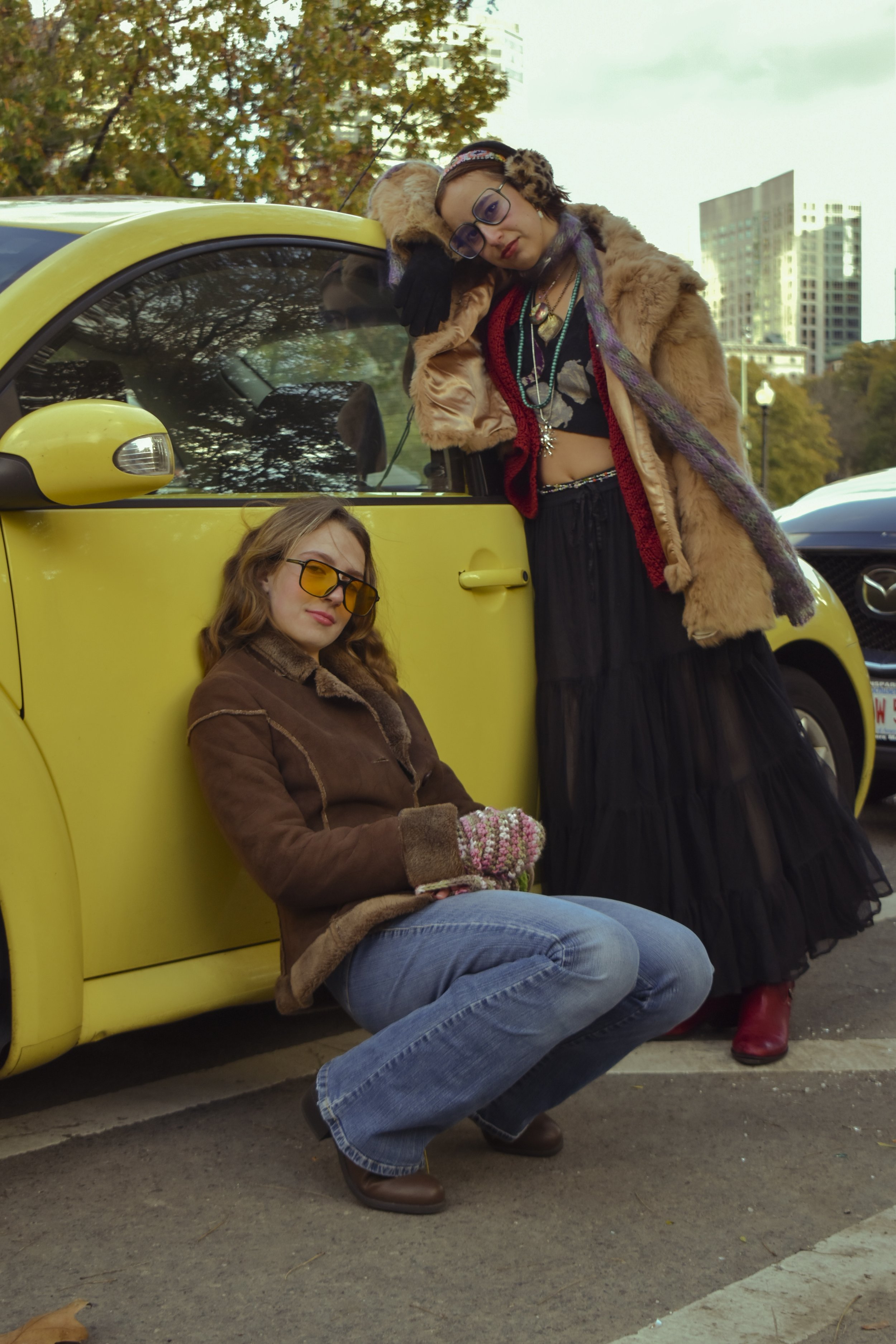ReFURposing the Fur Coat Debate
Photograph by Coco LaRochelle
Can I tell you a secret? I own a vintage fur coat. My grandmother recently gifted me her once prized possession. This golden mink garment has so much sentimental value to me. I remember running my hands over its soft fur and trying it on while my grandmother told me about her adventures wearing the coat in the city.
While I was beyond excited to finally inherit this vintage piece and channel my grandmother at school, I was scared. The evil looks and rude remarks I would receive while wearing my real fur finally got to me. Plus, I had this gut feeling that some PETA member would somehow find me and throw red paint at my coat.
While some argue against using real fur due to ethical concerns tied to animal cruelty, others believe owning vintage fur, which has already been created, is a separate moral issue. They argue that wasting existing fur items is unethical since the animal was already sacrificed.
I personally oppose buying new real fur but hesitate to completely reject vintage fur due to sentimental value and the desire to preserve family heirlooms. I aim to give these items a new life, but I wonder if I'm alone in feeling guilty about wearing them.
Amid ethical and environmental concerns, many fashion brands are shifting to faux fur. Infiniti Research Limited predicts a 19% growth in the artificial fur industry by 2024, thanks to its durability, versatility, and luxurious texture.
However, faux fur, while we might think it’s an animal friendly alternative fabric, poses environmental issues due to its non-biodegradable plastic composition. The debate around fur in the sustainability era persists, with vintage fur items offering an environmental advantage as real fur naturally decomposes.
Real fur also emerges as a more environmentally friendly choice with its longer lifespan and lower emissions of respiratory organics compared to faux fur. In reality, the production and life cycle of faux fur contribute to non-renewable energy consumption and environmental risks. Plus, the energy-intensive temperature and moisture control needed for faux fur production presents further environmental challenges.
Beyond environmental concerns, the economic impact plays a critical factor. While storing fur can be costly, a mink fur coat can be used, worn, and recycled for up to 30 years. In contrast, a faux fur coat typically lasts only about six years before disposal.
Fur clothing items have long been known to represent a status symbol. Despite the stigma around wearing fur, fur coats are still desired by enthusiasts who want that elevated status level. According to Vogue, a faux fur coat simply needs to be the centerpiece of your closet this winter.
Heidi Kaluza, 36, a sustainable fashion activist and influencer, draws from her experience as a former Nordstrom manager to shed light on the retail industry's unsustainable practices. On her Instagram account (the_rogue_essentials), Kaluza promotes sustainable style and urges her 47k followers to embrace what they already own. She said, “At the end of the day we have the business of fashion and the art of fashion, but we have to bridge those two. I believe that sustainability will be the bridge.”
In regards to the influx of the faux fur fashion trend, Kaluza questioned, “Is [real fur] being replaced to phase it out or is it being replaced to just make more of it?” By focusing on this status intention, it reveals the scrutiny that emerges from the discourse around fur in fashion. She said, “You're telling people how they should live based on what you would do when you [actually] have no idea what factors you're dealing with.” Kaluza noted the status aspect of clothing continues to reinforce hierarchical structures yet ignores the real functional and nostalgic features of fur coats.
As Kaluza goes back and forth between the ethical scenarios of keeping or ditching real products, she asked, “Why don't we recognize that you're doing the best that you can with what you have and what's been given to you?”
Inherited fur heirlooms can be creatively repurposed. April Perrin, a 41-year-old wardrobe consultant specializing in fashion sustainability, draws from her experience as a stylist for Style for Hire and her role as a TEDxYouth@RVA speaker on fast fashion. As the owner of the ALL AWEAR website, she inspires women to curate stylish and ethical closets. She said, “I knew there had to be a better way, and fashion should be a force for good versus exploiting people and exploitive nature action often creates that divide.”
Perrin recognized sustainability as nuanced. She also sees it as being very mindful and having specific intentions. Even though it is a complicated topic, Perrin regards the real fur debate in this light. She said, “I think everyone’s experience is different. Having worked in fashion and then seeing where the trend is headed, people nowadays are much more thoughtful and conscious about their clothes.”
She added that it depends on the individual person and their comfort with fur coats. “Most of the time you have to do what feels right for you,” she said. “There are always going to be people who disapprove or love it, but wear what you feel good about.” If they feel uncomfortable wearing it in public, Perrin suggested repurposing it, whether it's turning it into a blanket or pillow.
I’ll admit that I still feel a little awkward wearing the coat, but deep down, I'm confident it’s the right choice. Wearing this exquisite garment honors its history while creating new memories. Though I haven't had many chances to showcase its opulence as I thought, I've grown to appreciate its warmth and elegance, eagerly anticipating colder months.
While it’s true that some may raise eyebrows or simply criticize my choice to wear the coat, I don’t care what anyone has to say. I unapologetically love my real, golden fur mink coat, and I cannot wait to wear it again this winter season.

